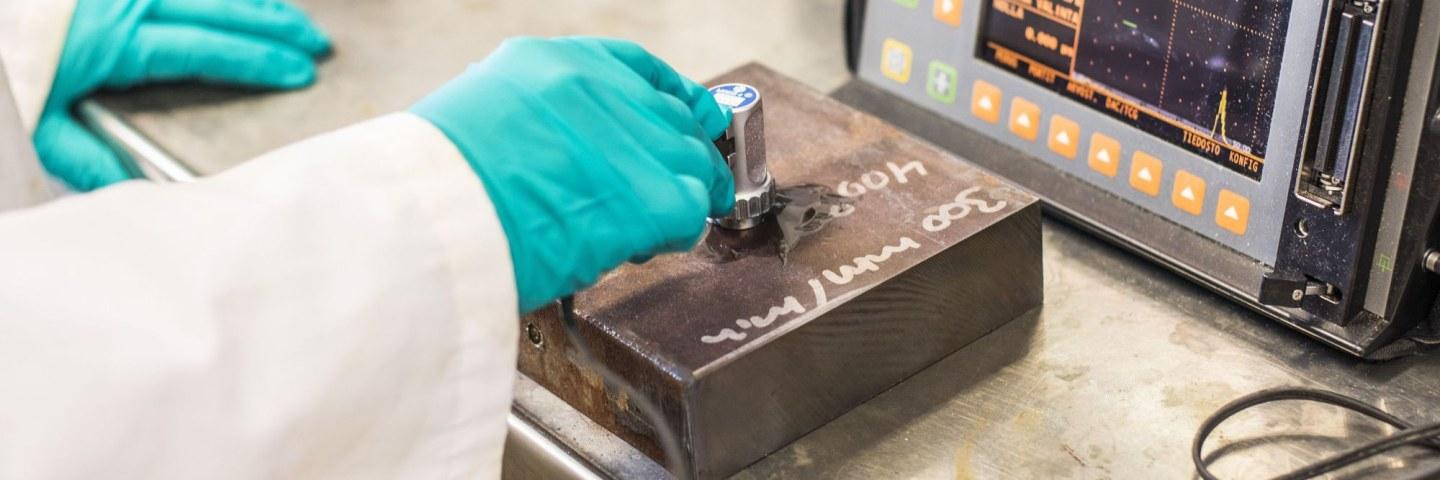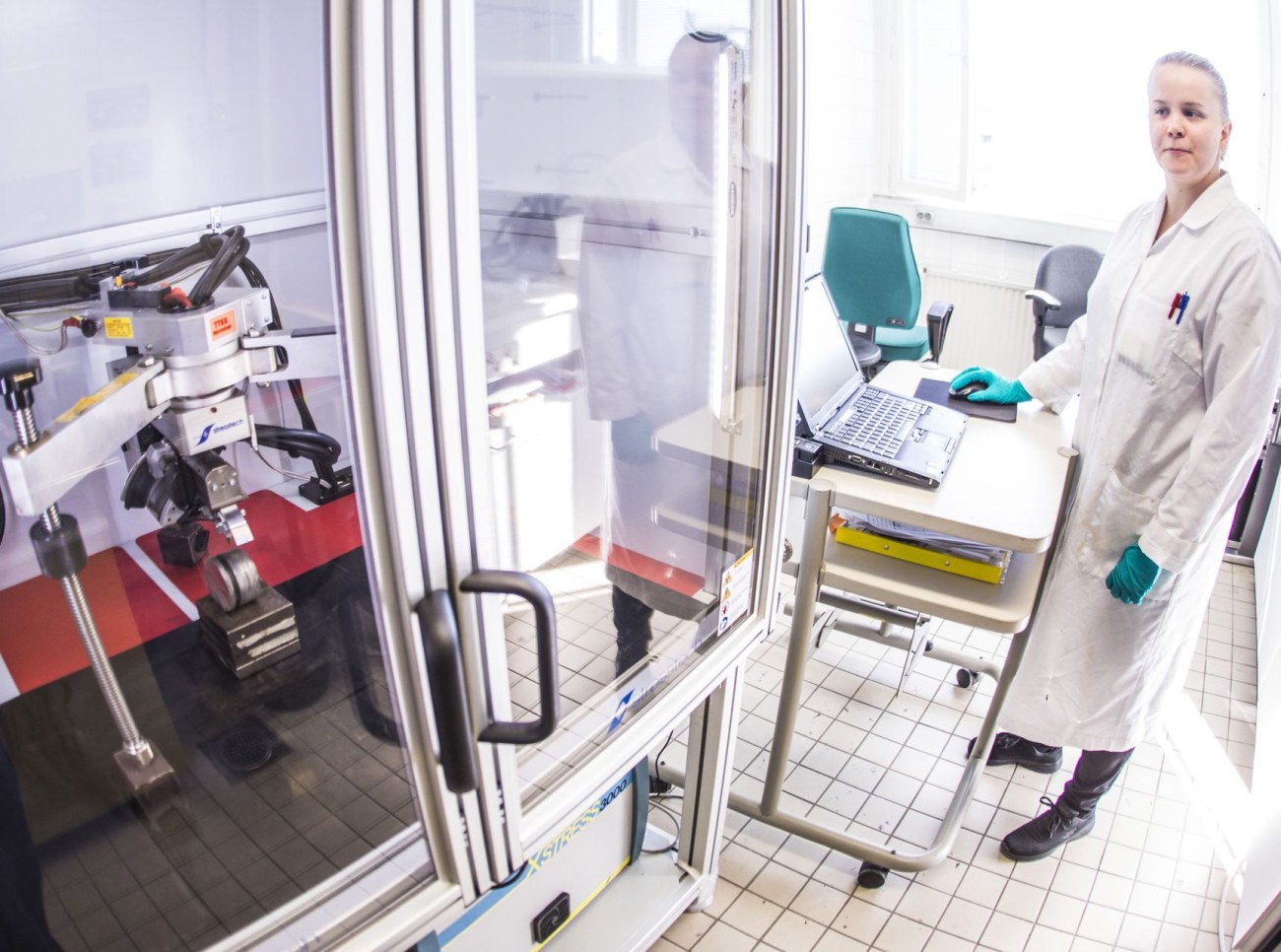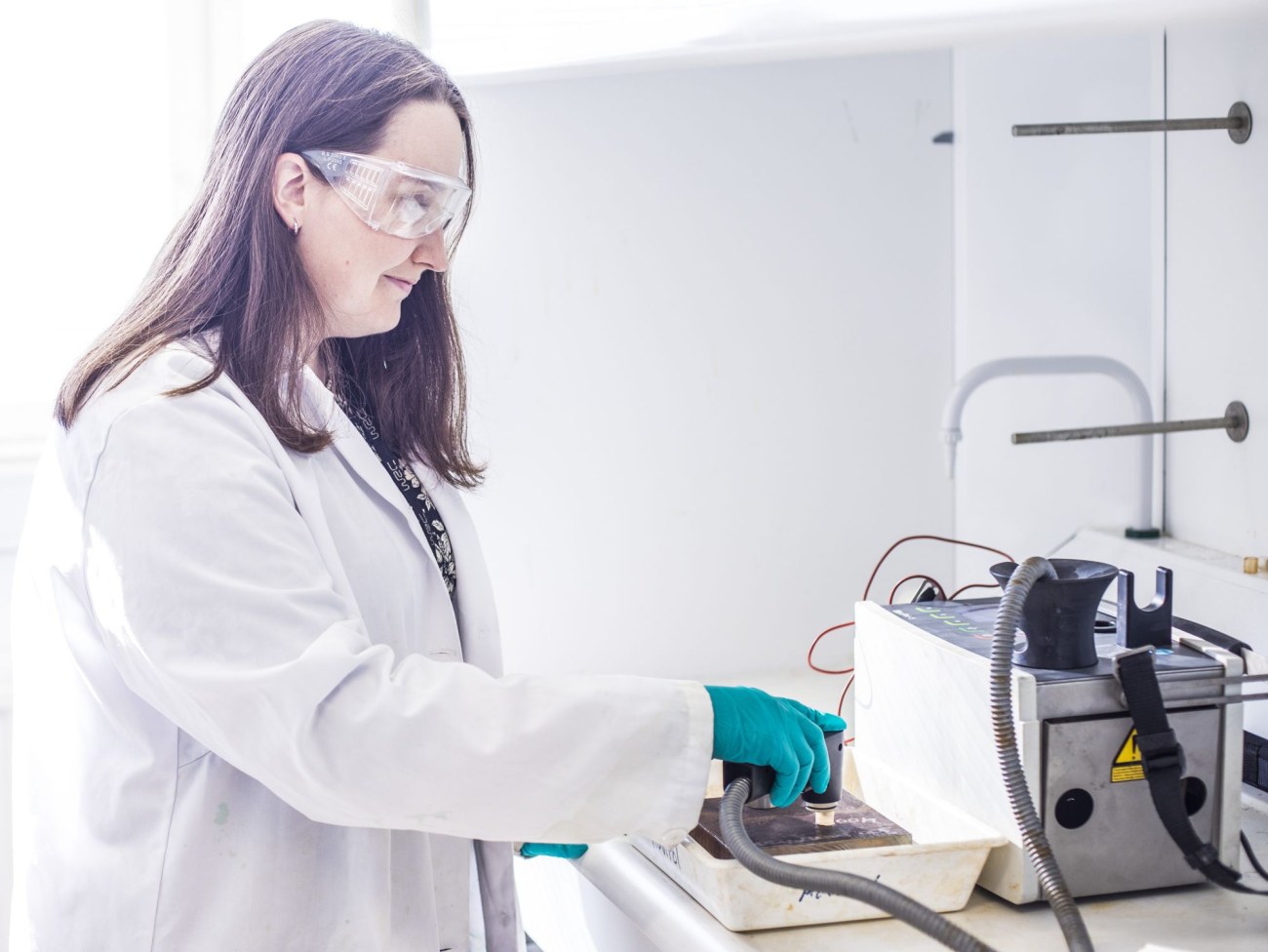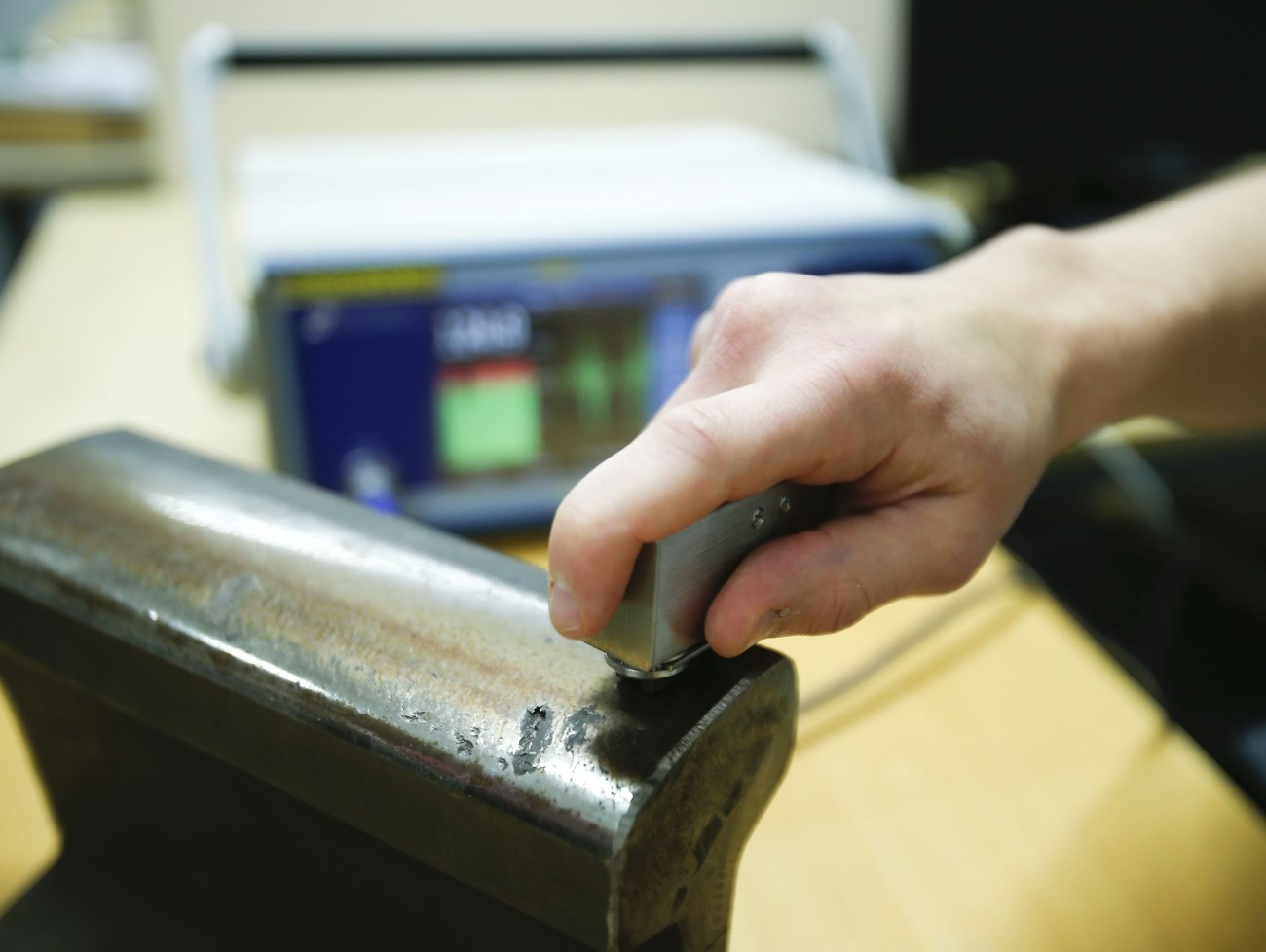
NDT laboratory
NDT laboratory
NDT (non-destructive testing) is a group of testing methods which are used for example in quality control of gears, castings and weld inspection of final products without compromising components final use. NDT laboratory provides facilities to carry out non-destructive testing and services for researchers at Tampere University Hervanta campus. We can train users to work independently with the testing methods and offer support to projects that need NDT research.

Research infrastructure
We have modern tools for versatile NDT measurements. For surface flaw detection we have surface replica technique, liquid penetrant inspection instruments and magnetic particle instruments.
Surface layer can be inspected with magnetic Barkhausen noise device Rollscan350 (Stresstech) and bulk analysis can be done with phased array ultrasound device Phasor XS (Olympus).
Surface residual stress measurements can be carried out with portable X-ray diffraction based device XStress3000 (Stresstech). The same device can be used to perform retained austenite measurements from polycrystalline materials. Electrolytical polishing device Movipol-5 (Struers) enables the residual stress and retained austenite depth profiles.
Barkhausen noise measuring device Rollscan 350
Barkhausen noise measuring device Rollscan 350 can be used for non-destructive testing of ferromagnetic components. The measurement is based on the magnetic properties of the ferromagnetic materials. The method is suitable for characterization of surface properties. The device can be used for evaluation of surface residual stresses and changes in the surface hardness/microstructure. The Barkhausen noise method can be used i.e. in final inspection of ground gears for detecting grinding burns and to inspect surface changes due to heat treatment
Portable ultrasound/ phased array ultrasound device Phasor XS
Ultrasound device Phasor XS for non-destructive testing. Along with normal ultrasound measurement this device can be used in phased array mode with the phased array probe. Phased array probe consists of 16 crystals (16 channels) that enables larger inspection volume compared to the normal ultrasound probe.
Residual stress measurement device XStress 3000 G2
Small and portable X-ray diffraction based stress analyzer. Suitable also for retained austenite measurements. Measurement depth varies from 1-10 µm from the surface according to the used X-ray tube.
- Residual stress measurements
- Retained austenite measurements
- Four peak retained austenite testing
- X-ray tubes (anode): Cr and Mn
- Adjustable 2ϴ-angle from +100° to 165°
- Replaceable collimator with different spot sizes
- Utilizes XTronic software for calculating the residual stress or retained austenite values.


Related infrastructures at Tampere University
For more information, contact us.

Research
Doctoral theses
Tuomas Jokiaho: Residual Stress, Microstructure and Cracking Characteristics of Flame Cut Thick Steel Plates : Towards Optimized Flame Cutting Practices, 2019
Suvi Santa-aho: Barkhausen Noise Method for Hardened Steel Surface Characterization - The Effect of Heat Treatments, Thermal Damages and Stresses, 2012
Latest open access articles
Santa-aho, S, Vippola, M, Sorsa, A & Ruusunen, M 2023, 'Grinding burn classification with surface Barkhausen noise measurements', Research and Review Journal of Nondestructive Testing (ReJNDT) , vol. 1, no. 1. https://doi.org/10.58286/28170
Gundgire, T, Jokiaho, T, Santa-aho, S, Rautio, T, Järvenpää, A & Vippola, M 2022, 'Comparative study of additively manufactured and reference 316 L stainless steel samples – Effect of severe shot peening on microstructure and residual stresses', Materials Characterization, vol. 191, 112162. https://doi.org/10.1016/j.matchar.2022.112162
T. Jokiaho, S. Santa-aho, P. Peura, M. Vippola, 2020, Cracking and Failure Characteristics of Flame Cut Thick Steel Plates, Metallurgical and Materials Transactions A, https://doi.org/10.1007/s11661-020-05639-x
S. Santa-aho, A. Sorsa, M. Honkanen, M. Vippola, 2020, Detailed Barkhausen noise and microscopy characterization of Jominy end-quench test sample of CF53 steel, Journal of Materials Science, https://doi.org/10.1007/s10853-019-04284-z
R. Tomkowski, A.Sorsa, S.Santa-aho, P. Lundin, M. Vippola, 2019, Statistical Evaluation of Barkhausen Noise Testing (BNT) for Ground Samples, Sensors, https://doi.org/10.3390/s19214716
A. Sorsa, S. Santa-aho, C. Aylott, B.A. Shaw, M. Vippola, K. Leiviskä, 2019, Case Depth Prediction of Nitradewd Samples with Barkhausen Noise Measurement, Metals, https://doi.org/10.3390/met9030325
T. Jokiaho, S. Santa-aho, P. Peura, M. Vippola, 2019, Role of Steel Plate Thickness on the Residual Stress Formation and Cracking Behaviour During Flame Cutting, https://doi.org/10.1007/s11661-019-05314-w



